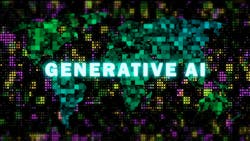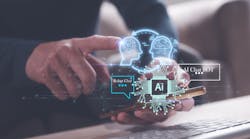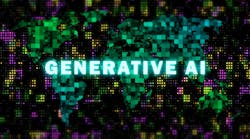The Silent Breach: Why Generative AI Is the New Insider Threat
The Skinny
- GenAI tools like ChatGPT are quietly becoming insider threat vectors, with well-meaning employees unintentionally exposing sensitive data during routine tasks, especially in high-risk departments like HR, legal, and marketing.
- Consumer-grade GenAI platforms are not secure by default and often lack the compliance, logging, and data protections required for enterprise use, posing serious privacy, regulatory, and reputational risks.
- Security leaders must rethink traditional defenses by implementing strict GenAI use policies, provisioning secure enterprise tools, training high-usage teams, and updating insider threat models to detect risky AI interactions.
As security and risk leaders strive to protect digital assets in an increasingly complex threat landscape, a new challenge has emerged not from malicious actors but from well-intentioned employees utilizing powerful new tools. Generative AI (GenAI) platforms, such as ChatGPT, Gemini, Claude, and Perplexity, are becoming integral to how organizations operate. From streamlining HR processes to accelerating software development and marketing campaigns, these tools are reshaping enterprise workflows.
But beneath the productivity gains lies a latent security hazard: GenAI is quickly becoming the newest—and least understood—insider threat vector. And the danger is closer than many executives realize.
The Next Breach May Come From HR
In today’s risk environment, the subsequent data leak may not originate from a foreign threat actor or a disgruntled insider—it may come from a recruiter pasting candidate information into a chatbot, a software engineer uploading source code to debug an issue or an HR director drafting a sensitive memo in a consumer-facing AI tool. None of these actions are malicious. Yet all can result in the same outcome: sensitive data exposed outside the enterprise perimeter, with little traceability or recourse.
Security teams have long focused on defending against credential theft, malware and phishing. But the rise of GenAI tools is creating a subtler, more distributed form of exfiltration. It happens during routine workflows, often without triggering any alerts.
This isn’t a hypothetical threat—it’s already occurring.
Productivity at the Expense of Protection
The value proposition of GenAI is compelling: faster task completion, less cognitive load and more consistent outputs. Employees use these tools to summarize documents, draft communications, rewrite performance reviews and generate reports. For HR teams, in particular, who deal with a high volume of sensitive communications, GenAI tools seem like a godsend.
But these perceived gains come with significant risks:
● A recruiter using ChatGPT to personalize rejection emails may unknowingly paste personally identifiable information (PII) into a system that stores and learns from that input.
An HR generalist drafting a performance improvement plan may inadvertently disclose internal performance metrics or disciplinary records to third-party AI models.
● A legal team member summarizing contracts through GenAI could expose proprietary clauses or negotiation strategies.
The primary issue is that GenAI tools, especially consumer-grade versions, are not designed with the same level of enterprise-grade security and compliance controls as their enterprise-grade counterparts. They were built for accessibility and scale, not for safeguarding sensitive corporate data.
The value proposition of GenAI is compelling: faster task completion, less cognitive load and more consistent outputs. Employees use these tools to summarize documents, draft communications, rewrite performance reviews and generate reports.
AI Platforms Are Not Secure by Default
Many organizations mistakenly believe that the content entered into GenAI tools is private by default. In reality, unless your company is using a licensed enterprise version of the platform with contractual data retention and governance agreements, your data may be:
● Retained and stored indefinitely
● Analyzed for model improvement or fine-tuning
● Shared across sessions or surfaced in future user prompts
Additionally, most public GenAI tools lack SOC 2 certification, HIPAA compliance, or FedRAMP authorization. Encryption in transit is common, but what happens to the data once it reaches the model’s servers is often opaque. Even when tools promise anonymity, metadata is still captured, including IP addresses, session IDs, browser fingerprints, and usage patterns. These can be correlated over time to re-identify users or infer organizational behaviors.
HR Is Ground Zero for GenAI Risk
Among all departments, human resources is uniquely exposed. HR manages some of the most sensitive data in the organization: health records, compensation details, hiring decisions, employee disputes and termination notices.
Yet HR is also often undertrained in data security and underrepresented in security strategy discussions. Combine this with their enthusiastic adoption of GenAI tools for everyday tasks, and HR becomes a likely breach vector, not because of intent, but because of process gaps.
Without clear policy guardrails and secure alternatives, HR professionals will continue to use the most convenient tools at their disposal, potentially turning every prompt into an untraceable data spill.
A Cross-Functional Risk Governance Imperative
The nature of GenAI risk necessitates a shift in how organizations approach insider threats. Traditional detection methods, such as monitoring for abnormal login behavior or large file transfers, will not catch sensitive data pasted into a browser-based chatbot.
Security leaders must proactively address this blind spot through comprehensive governance strategies. This includes:
● Establishing Clear Acceptable Use Policies: Ban or restrict the use of non-enterprise GenAI tools for handling sensitive or confidential data. Specify the types of data that cannot be entered into AI platforms and clearly communicate the rationale across the organization.
● Provisioning Secure, Auditable AI Platforms: If GenAI tools are deemed essential to workflows, provide secure, enterprise versions with access controls, usage logging and explicit data retention policies. Work with legal and procurement teams to negotiate contracts that protect corporate data.
● Configuring Platform Defaults: For permitted tools, ensure data logging, chat history and third-party sharing features are disabled by default. These platforms often opt employees to enter data collection unless settings are manually adjusted.
● Expanding Insider Threat Models: Update detection models to account for GenAI-related risks. This includes monitoring for unusual copy-paste behavior, unapproved tool usage and unexpected data movement from protected applications into browser sessions.
● Continuous Training and Awareness: Integrate GenAI-specific risk scenarios into employee security training. HR, legal, and marketing teams—who are heavy users of these tools—need tailored guidance on the implications of AI-assisted workflows.
The Blurred Lines Between Productivity and Risk
One of the biggest challenges for CISOs and risk executives is that employees using GenAI tools don’t perceive their actions as risky. Unlike downloading malware or clicking a suspicious link, using a chatbot to help rephrase an email seems innocuous. This is where governance must evolve. Security teams must recognize that intent is no longer the best indicator of risk. Good intentions can still lead to damaging outcomes.
AI tools now occupy the gray area between convenience and compromise. Without intervention, they will normalize a pattern of behavior where proprietary data is routinely exposed to third parties with little organizational oversight.
Rethinking the Perimeter
The concept of a traditional security perimeter, defined by firewalls, VPNs and endpoint protections, no longer holds. In the era of GenAI, every browser tab is a potential point of exfiltration. Every user prompt is a possible vector.
Security must now extend beyond the device, beyond the application and into the user's decision-making process. Risk leaders must help shape not only what tools are available, but how those tools are used—and when.
The implications of failing to act are profound: reputational harm, regulatory violations, customer trust erosion and competitive exposure.
Conclusion: Insider Threats Now Speak in Prompts
As GenAI continues to reshape how work gets done, security leaders must adapt their strategies to match the new reality. This is not just an IT challenge; it is a cross-functional imperative that demands leadership from the top.
Governance must be proactive, not reactive. Risk policies must be aligned with how employees actually work. And enterprise trust must be designed into every GenAI integration, not assumed.
In the age of AI-assisted productivity, the next insider threat won’t sneak through the back door. It’ll come through the front, disguised as efficiency. Security must evolve because the threat has evolved. And today, it speaks in prompts.
About the Author

Raj Ananthanpillai
Founder and CEO of Trua
Raj Ananthanpillai is the founder and CEO of Trua, a pioneer in reusable, verified digital trust credentials. Before founding Trua, Raj served 13 years as the CEO of InfoZen, a risk management and digital credential solutions provider acquired by a publicly-traded company in 2017. Under his leadership, InfoZen developed, amongst many others, a system to pre-screen airline passengers for the U.S. Department of Transportation’s Trusted Traveler program, now known as the Transportation Security Administration’s (TSA) Pre-Check program. InfoZen also developed and managed continuous risk assessments for port, dock, and aviation workers as part of TSA’s and U.S. Coast Guard’s access and security programs.


